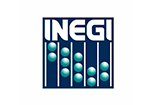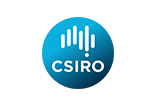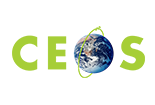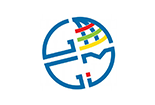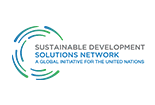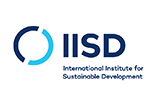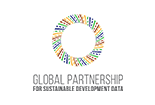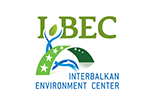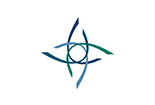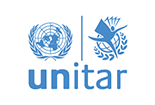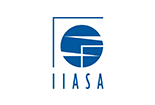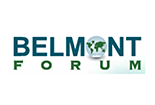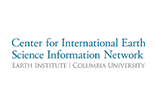2019 EO4SDG Annual Meeting Summary
EO4SDG held its 2019 Annual Meeting on the margins of the Ninth Session of the United Nations Committee of Experts on Global Geospatial Information Management (UN-GGIM 9) on August 5, 2019 at the UN Headquarters in New York. You can find highlights from the EO4SDG Annual Meeting via our Twitter Account, @EO4SDG. The slide deck from the sessions are available via the following link: EO4SDG Annual Meeting Working Sessions.
For more information, including a photo gallery, see the UN-GGIM9 website, here.
Meeting Summary and Actions
Session 1.0: Welcome
Setting the stage & meeting objectives (Exec. Sec., Co-Chairs)
Session 1.1: EO4SDG Successes, Challenges, Lessons Learned & Opportunities for the Future
This session provided an opportunity for the Executive Secretary and others to share a summary of key activities, including accomplishments, lessons learned, challenges and opportunities for the future during 2018-2019.
The slide deck from this session’s presentations is available here and will soon be made available via the EO4SDG website. For more information, including a photo gallery, see here.
Session 1.2: 2020-2024 EO4SDG Implementation Plan
- Reviewed updated 2020-2024 Strategic Implementation Plan, including GEO Programme Board Feedback (Exec. Sec., Co-Chairs)
- Comments and suggestions on the Plan
Feedback & Moderated Discussion on Goals and Objectives outlined in the updated 2020-2024 EO4SDG Strategic Implementation Plan:
- (WS/ MIT) EO4SDG should work in concert with UN-GGIM and the WGGI and the respective NSOs (as these get engaged with the WGGI and its Task Stream on EO and SDGs) to develop national dataset validation activities. This is also what the LDN Initiative is looking to do with 15.3.1 / land degradation neutrality.
- (DA/ GPSDD) We should be more ambitious than 30 country examples by 2024 (objective under Goal I of the EO4SDG Strategic Implementation Plan). Need to make sure we can make well-documented methodologies openly available as soon as possible.
- (LF/E04SDG Co-Chair) We would like to cover both breadth in terms of indicators and depth in terms of number of countries (e.g., not 30 country examples on one indicator). We are trying to understand what is the balance between breadth and depth. We are also looking to see what is an appropriate spread of countries (large / small, landlocked, small island states, other) that we can work with to develop examples of EO uses for specific SDG indicators, so that those countries can then be the ambassadors that can share their experiences and help other countries around them. A GEO Secretariat Expert can help do some of this connecting work from country to country to help get us to over 30 country examples.
- (AK/ EO4SDG Exec. Sec) Working with regional GEOs as well as regional UN entities can help us with identifying the appropriate spread of countries.
- (BC/CIESIN) GPSDD, GEO, and UN-GGIM have mechanisms to scale examples to several countries. GPSDD has access to a number of statistical offices and other government entities. Claire Melamed, Exec. Director will be in Canberra, and this can be another opportunity to address these issues.
- (JC/ UN Environment) Should include 1.1 in the indicators’ list considered under Goal I of the Strategic Implementation Plan, as UNEP is doing a lot of work with GEO and Blue Planet in particular. We have a growing body of experience related to the use of satellite data beyond the SDGs. We are still lacking experiences from using other types of EO (e.g., citizen science, other). Should we have another objective under Goal I that talks about other forms of data being used or data integration to help achieve the SDGs.
- (MML/ EARSC) How should we structure these 30 country examples, e.g., from a geographic point of view, from an economic, environmental, regulatory, etc. point of view, or other?
- (SR/ GEO Sec) How does the EO4SDG Survey (and ~25 examples of countries using EO for SDG that were identified as part of the survey) fit into this? Are we going to look at the different GEO WP areas as a way to structure the spread of those examples?
- (AB/ Wilson Center) No single data source is going to help us do the monitoring and assessment that we need to have in order to ultimately deliver on the SDGs. From a GEO perspective, if you are trying to get different types of activities within GEO to collaborate using the WP as an organizing framework, this is a solid way forward. The SDG EO/GI interactive knowledge resource, which is included as an objective under Goal I of the EO4SDG Implementation Plan, is really important especially from the perspective of understanding limitations, fitness for use, and triangulation of information from multiple sources.
- (MP, ESA) Should we focus on SDG indicators or broaden scope to cover the Goals and Targets, and more broadly sustainable development?
- (LF, EO4SDG Co-Chair) In the EO4SDG Plan, we recognize the fact that it is not just about the indicators. An objective under Goal I focuses on targets; there is a question about how we can achieve this, what this will look like.
- (HPP/IEEE) Experience from stakeholder workshop in the Caribbean: working with the governments there, we realized there are no resources to be trained. Also, no resources to look at all SDG targets and indicators. We have to really understand what is happening in these small countries. Participatory effort working with the governments and the agencies involved is an approach that we should follow.
- (AK/ EO4SDG Exec Sec) How can we help use such projects/ activities and workshops for a needs assessment that can be communicated broadly?
- (BD/ CIESIN) Reflecting on Objective 1, Goal I à Develop 30 country examples: 1) can we identify opportunities where there is overlap and knowledge sharing can take place where e.g., one country can learn from other(s). 2) focus on solutions that are transferable and reproducible.
- (SR/ GEO Sec) To Hans Peter comment, we are planning something along these lines with the Pacific Community (this organization will function as single point of contact for all countries in that region). Through UN SDSN and GPSDD, there are organizations like CEPEI with good political and technical connections and contacts at regional level. We should tap on existing relationships that GEO has with UN Economic Commissions like UNECE, UN ESCAP, ECLAC etc. as well as through the regional GEO initiatives.
- (Bob Chen/ CIESIN) SDG Toolbox: discussion on what the tool is/ will be? Will it be a collection of tools (like Trends.Earth, others)? What are possible models?
- (LF/ EO4SDG Co-Chair) Should have a team that scopes this toolbox out and brings it up for discussion and decision?
- (AB/ Wilson Center) Co-designing what the toolbox could look like could help bring engagement across GEO
- (J O’N, GPSDD) Need to consider the intended audience for such a toolbox
- (MML, EARSC) Goal II of the IP, can broaden the scope in terms of other types of users (especially if we broaden the scope and look beyond the indicators); this can help bring more stakeholders.
ACTION I – Develop a few (1-3) approaches on how to structure the 30 country examples (e.g., in terms of geography, theme, etc.) listed under objective 1 of Goal I in the updated EO4SDG Strategic Implementation Plan.
Leads: TBD
Open Session: Earth Observation Solutions to Address the UN SDG (1.5 hours) 
- Keynote: Mr. Steven Ramage, Head of External Relations, Group on Earth Observations (20 minutes)
- Presentation: Mr. Ian Coady, Geospatial Advisor, Department for International Development, UK (20 minutes)
- Moderate Discussion
Slides from the open session are available here: Open Session-EO4SDG Annual Meeting
Session 2.1 Breakout Round A (1.5 hour)
Breakout Group A1: Good practice examples of methods for measuring and reporting on SDG indicators: Develop guidelines for packaging openly shareable, reproducible methods tailored to NSOs/ line ministries/ NMAs.
Summary & Outcomes
Breakout group A1 focused on reaching consensus on the general guidelines to package good practice examples of methods for measuring and reporting on SDG indicators tailored to NSOs/ line ministries / NMAs. The group agreed that we should begin by focusing on some indicators (ones where significant work has already been completed or where there are clear opportunities and existing activities to leverage (i.e., existing products, services)) as a starting point (indicator 15.1.1 (forest cover) was one proposed by Cindy Schmidt from NASA Ames, who volunteered to lead this, Chu Ishida offered to lead the mangroves-related aspects of 6.6.1, in addition to others (e.g., sustainable urbanization, water-related ecosystems, sustainable agriculture, land degradation etc.). The group also highlighted the need to reflect on geographical coverage; and assemble the relevant partners for respective indicators into a task team to develop workflows with participation from relevant regional and national bodies, UN custodian agencies, and GEO thematic activities, while also considering how to bring in some funded projects that are working to pilot the use of EO methods within country/ regional settings (with a target of being geographically representative).
Need to focus on targeted audience for these (NSOs, ministries, NMAs, others). Can think of developing this around a particular SDG (or broader thematic area (e.g., a problem statement)), and then narrowing this down to SDG targets/ indicators. Can consider the metadata structure as an example to follow, while developing these workflows. These should include all relevant datasets, available tools and platforms, training material, as well as good practice examples (e.g., solid use cases and national experiences per SDG target and indicator) supported by Earth observations. These comprehensive methodologies will be presented in an openly accessible way and be made available via the EO4SDG website (https://eo4sdg.org). These can also be linked to the GEO Knowledge Hub, and will be accompanied by capacity development efforts through functional tools and trainings.
ACTION II – Develop concept note for workflow structure for packaging good practice examples of methods for measuring and reporting on SDG indicators.
Leads: Cindy Schmidt, Argie Kavvada, Chu Ishida (can identify 1-2 additional POCs)
Breakout Group A2: EO4SDG Federated Approach to GEO’s overall service to the SDG: Define a process to coordinate across ongoing and new GEO Work Program elements that are working towards or have the potential to support the UN SDG
Summary & Outcomes
Breakout group A2 focused on identifying and outlining recommendations for a systematic process that EO4SDG can use to coordinate across ongoing and new GEO Work Program elements that are working towards or have the potential to support the UN SDG. This can help EO4SDG, as part of its federated approach, to more efficiently work with other GEO thematic activities to identify opportunities for connecting relevant data, information products, applications, and services with respective SDG targets and indicators, and to enable the use of these products and outputs by countries and relevant stakeholders for SDG monitoring, reporting and policy making.
- Recognized that this is an issue overall (not just for SDG) for GEO (e.g., regarding climate, Sendai, other areas)
- Identified “what is the problem we are trying to solve” & what does ‘federated approach’ mean or what should it mean :
-
- What may be working alright that we should keep? What to change/ add?
- What are smart practices from other federated approaches by other organizations?
- How does all this serve the member countries?
-
- Steven Ramage mentioned that there is a realignment of the Work Programme, and as part of that activity, some of the foundational tasks have changed: one of these is engagement priorities, and this task will certainly cover the federated approach (not addressed just yet)
- The group discussed that there are several possibilities in terms of entities who have expressed (or may express) interest in using EO for specific SDG and linking their activities to the 2030 Agenda: such requests can come from countries, a flagship/ initiative/ community activity (F/I/CA), custodian agencies (examples include UNEP, UN Habitat, others), someone from the GEO Secretariat or Participating Organizations (POs).
- How would a federated approach work: develop a team with the appropriate expertise to understand the identified needs, reach out to the appropriate parts of GEO to pull in thsoe expertise, sustaining work with them, while also leveraging knowledge acquired within EO4SDG in terms of the UN SDG process, the Global Indicator Framework and tier system
Action III – Form a small team to scope a concept note (Leads: Anne Bowser, Daniel Takaki (or POC from Blue Planet), others can come in (e.g., HPI, GFOI, GEOGLAM, others), Argie Kavvada will support this. Typology-based stakeholder mapping(information, personnel exchange, other methods). Identify 3-5 F/I/CA to start with (we have some candidates already identified to pursue).
Issues discussed:
- Who are we approaching with federated approach (NSOS or GPSDD, SDSN, custodians, others)
- Outreach component (what part of federated approach focuses on bringing awareness to successes in countries so that others can learn about these and pursue similar efforts
- Issue with data: what part of these is the operational production of information products (and what is our role here) – more than demonstrating potential that EO can be used but having a routine production
- What will we be doing to get ready for GEO Week 2019: Concept note to be developed within month so that in a late Sep meeting this can be shared with the broader EO4SDG Team at a telecon so that we can then have another month to further develop this in preparation for the GEO Plenary (early Nov 2019)
- What other messaging do we need to complete in preparation for the GEO Week 2019
- GEO Principals who are statistical offices (how do we take them into consideration) here
- Need to think how this federated approach will connect with the outputs from group 1
- Importance of private sector in this
- On the Plenary, if there are countries that will provide examples and this will be documented we should think of who will be up on the Plenary and on the SDG session and how we can align these two
Session 2.2 Breakout Round B (1.5 hours)
- Breakout Group B1: Strengthening partnerships and advancing EO use in SDG monitoring, reporting, and decision making.
- Breakout Group B2: GEO Secretariat support for EO4SDG, Resources, and Prioritization of EO4SDG Deliverables
The two groups were combined into one given time limitations, and the fact that this was considered the most efficient way to run this session.
Discussion and Outputs:
- A lot of initiatives, pilots, methodologies developed many times in silos
- GFOI perspective: we have a challenge as 5 different countries are leading this initiative in addition to FAO and the World Bank (WB); have duplicated effort for a long time, and we now have an ecosystems of tools and methodologies. The U.S. side of GFOI works with 23 countries, FAO with 9 countries we overlap in some, and we try to collaborate in those cases (and we still tell countries these are the options and tools that are existing). We have the contacts in countries for the forestry sector, we have an ecosystem of tools and methods, and we can provide that information. In a similar fashion, someone has to do this for the SDG. GFOI’s work is focused on reporting at national level (have worked with global datasets; it is key to identify where global datasets are useful and where they are not useful for countries. For reporting, very few countries are using global datasets, as these are not representative of their specific context)
- Via the UN ‘global geospatial fundamental data themes’, if there was a vetting/ quality process so countries can have some comfort in using global datasets that would be a good point to focus on. Maybe GEO is a place to help clarify what global datasets can support these themes.
- Likewise, the work with UN Custodian Agencies can provide a route for identifying which global datasets can support respective SDG themes/ targets/ indicators
- Encourage comparisons for guidance on fit-for-purpose
- ‘Leave no one behind’ – an area where EO can contribute greatly (can make progress on via a set of partnerships, given it is a bit smaller than all of the SDGs and all countries) – thinking of SDSN, GPSDD, others
- Need narrative around big topics / key priorities or themes
- Need to talk about SDG process (indicator framework, demystifying this process is another critical point for this work to succeed)
- As part of data for now project, we are mapping the existing datasets that are timely – what is not clear is who is using them (and how they are being used)
Toolbox:
-
- Need group to scope/ design options and recommendations
- Formulate team in time for plenary/ summit
- Many NSOs don’t have the tools nor the capacity they need to advocate for use of EO to address the SDG.
- Toolkit: Starting with Question (understanding the audience/ recipient) and then there is a flow to it (first developing the flow) and toolbox can be part of that
- What are the data services available through GEOSS that could be pulled together to do this type of analysis (much like at the level of GIT Hub repository, associated webpage that shows all services then you can use these tools)
- For the GEO Knowledge Hub, there is an activity at the technical level with GEOGLAM to do this (so this can be an example to look at)
- Toolboxes are about creating indicators but can be used in other ways.
- Is there a toolbox (built on GEOSS open data resources, multilateral) that can help quickly show a government that this is what you can do with EO.
- Consider other efforts to develop toolboxes (e.g., GPSDD)
ACTION IV – Develop team to scope out options and recommendations for an SDG Toolbox. NSOs may not have the capability to use data/ information and a toolbox can even support them to argue for why EO/GI data should be used.
Leads: TBD (Bob Chen? Others? Can bring others from other parts of GEO)
- Read results oriented GEOSS (written for Ex Comm). Align with other efforts that are underway (GEOSS Evolve, etc.), regional platforms
- Formulate team in time for Plenary / Summit (can include others from other parts of GEO). Can have a talking point at Plenary / look
- Can amend SDG paper for GEO Plenary that AK has written to include some of this
GEO Secretariat Expert Profile and Duties (Qualifications & Duties):
- Matrix Management (to assist with federated approach)
- Developing and documenting models of bringing different people together (process documentation) – Stakeholder mapping (awareness)
- Understanding landscapes
- Collaboration management/ identification (functioning as a liaison between GEO Sec and EO4SDG)
- UN Process, Earth Obs/ Geospatial
- Program Management, Project Management
- Fundraising
- Technical background + UN process are important (UN process is easier to learn than EO)
- France has mentioned that they may be interested in funding an SDG secondment to the GEO Sec. (2 year post)
ACTIONS V & VI: GEO Secretariat Profile & Duties: Consolidate recommendations on GEO Secretariat SDG Expert Profile & Duties and send to GEO Secretariat. Lead: Argyro Kavvada. We need to further address prioritization of deliverables for GEO Week 2019 & 2019-2020, as well as review of existing resources and develop recommendations for additional funding opportunities. Follow up on these items in preparation to our next EO4SDG Call (September).
Leads: Multiple, Argie Kavvada will coordinate with EO4SDG Team in preparation for next EO4SDG Telecon (September)
View All News





